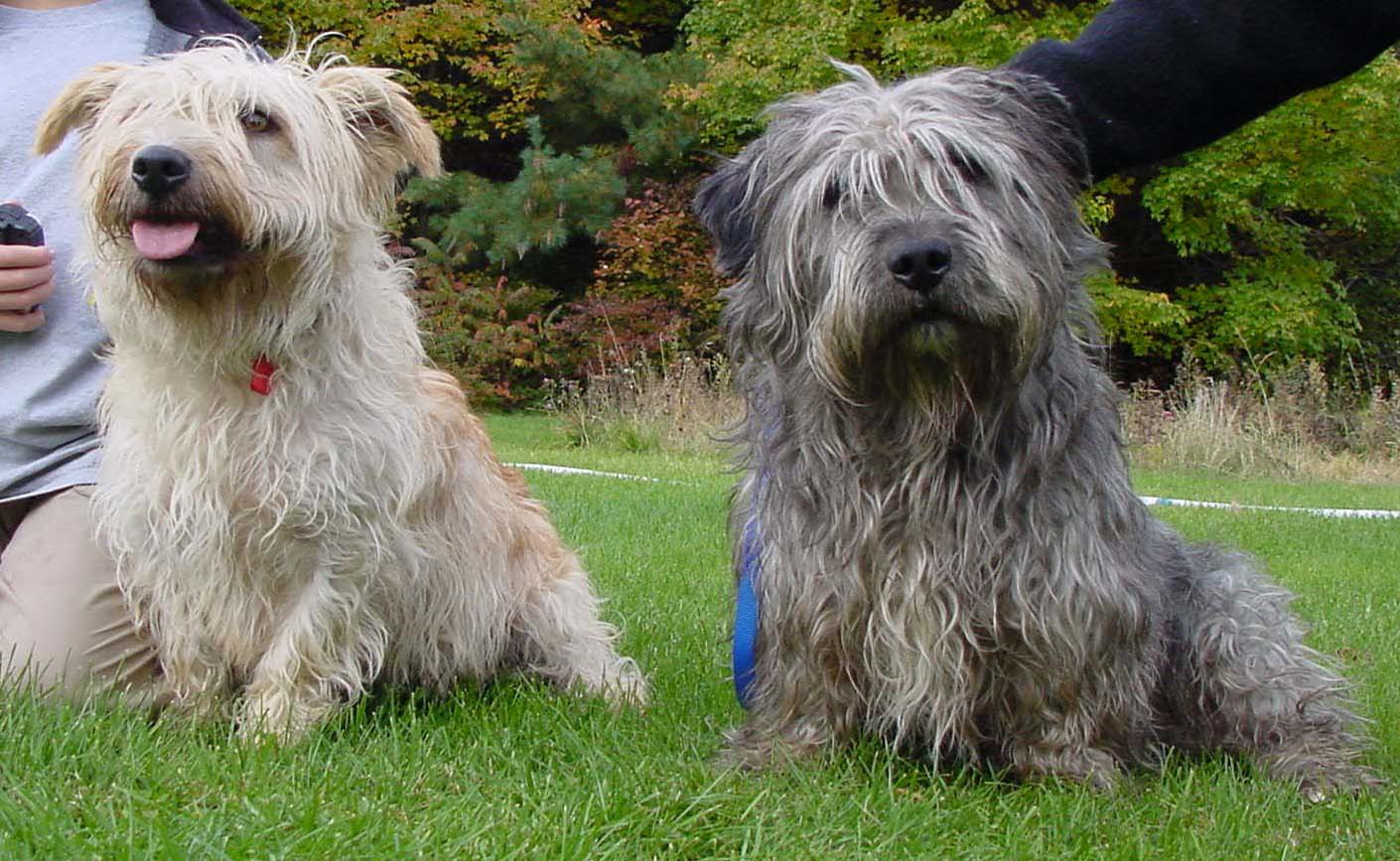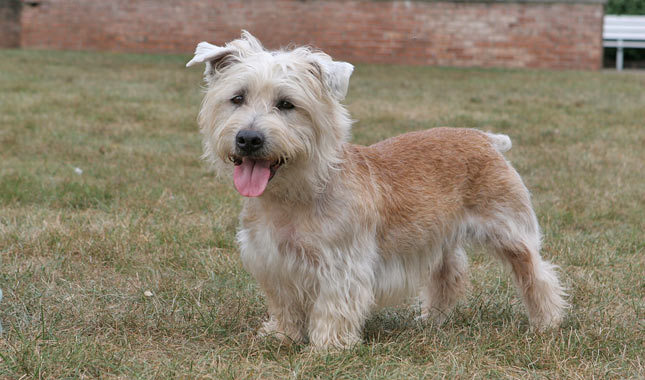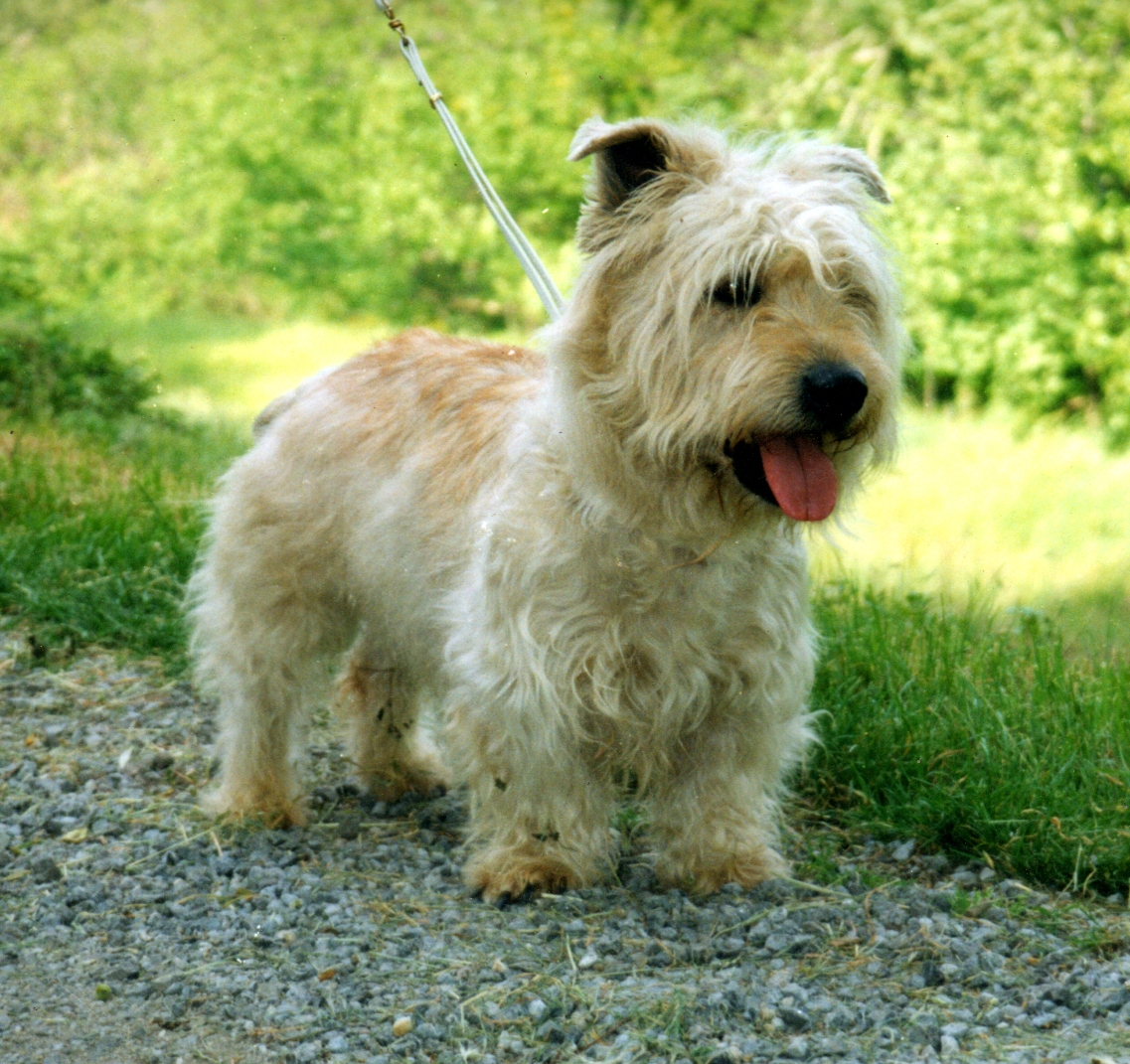
The Breed History
This breed originates in Ireland in County Wicklow. It is still a rare
breed-in the USA about 400 terriers are registered with their
national breed club. The Irish Kennel Club recognized the breed in
1934, a long time after the genesis of this very old breed. The AKC
recognized the breed in the terrier group in October 2004.
Breeding for Function
This is an agile powerful hunting terrier of ancient terrier type.
Breeding in ancient times was focused on producing a dog with
excellent vermin control skills, and also an aid to the fox and badger
hunter. A unique historical task was to be a turnspit dog. This was
a wheel that the dog turned which rotated the spit over the fire for
roasting pig and other meats. Their deep bark makes them sound
like a much larger dog. They excel at obedience.
Physical Characteristics
Height at Withers: 12.5-14" (32-35.5 cm)
Weight: 35 lb (16 kg)
Coat: Medium length, double, with harsh overcoat. Accepted colors
include blue, brindle (usually blue) and wheaten. Needs 1-2x weekly
brushing, and once to twice annual stripping. Ears need to be
plucked. Bathing done on an as-need basis.
Longevity: 10-15 years
Points of Conformation: Head is large, skull broad, eyes are round
and wide set. Rose or half prick ears are small and set back and high
on the skull. A scissors bite or level bite is accepted. Muzzle tapering
to the black nose, and stop is pronounced. The neck is thick, and
topline is unique to the breed, with a gentle curve up to the lumbar
area. Limbs are short, and have some bowing-the compact front
feet turn slightly out while the rear feet are straight. The thorax
is deep and full but not barrel shaped. Hindquarters are heavily
muscled. Generally the tail is docked to 1/2 length, and is carried
high while active. The gait is smooth, flowing and covers a lot of
ground with each stride. Is longer than tall in overall proportions.
Recognized Behavior Issues and Traits
Breed attributes reported include: Courageous, stoic, hardy,
stubborn, independent, spirited when working, but tame at home.
Game for a fight with other dogs, but can live fine with other pets
if socialized early to them. A little less active than other terrier
breeds. Strong chase instinct-need to be loose only in a secured
fence enclosure-the fence needs to be designed to counteract
their excellent digging skills. They have a low bark tendency. Work
silently. Not considered the best of swimmers. Good with older
children-can be a bit strong and active for youngsters.
Normal Physiologic Variations
None reported
Drug Sensitivities
None reported
Inherited Diseases
Hip Dysplasia: Polygenically inherited trait causing degenerative
joint disease and hip arthritis. OFA reports 30.0% affected.
Elbow Dysplasia: Polygenically inherited trait causing elbow
arthritis. OFA reports 16.2% affected.
Patella Luxation: Polygenically inherited laxity of patellar
ligaments, causing luxation, lameness, and later degenerative joint
disease. Treat surgically if causing clinical signs. Too few Glen
of Imaal Terriers have been screened to determine an accurate
frequency.
Progressive Retinal Atrophy (PRA)/Cone-Rod Dystrophy
(crd3): Autosomal recessive disorder of cone, and then rod retinal
degeneration. Clinical signs begin in middle age as night blindness
and difficulty in dim light, and progresses to complete blindness.
Affected dogs can be identified ophthalmoscopically as young
as 3 years of age, with progression over several years. Identified
in 4.14% of Glen of Imaal Terriers CERF examined by veterinary
ophthalmologists between 2000-2005. CERF does not recommend
breeding any Glen of Imaal Terriers with PRA/crd. A direct genetic
test is available.
Disease Predispositions
Hypothyroidism: Inherited autoimmune thyroiditis. 7.1% positive
for thyroid auto-antibodies based on testing at Michigan State
University. (Ave. for all breeds is 7.5%).
Allergic Skin Disease: Inhalant or food allergies. Causes pruritis and
pyotraumatic dermatitis (hot spots). Reported to occur in the breed.
Distichiasis: Abnormally placed eyelashes that irritate the cornea
and conjunctiva. Can cause secondary corneal ulceration. Identified
in 4.13% of Glen of Imaal Terriers CERF examined by veterinary
ophthalmologists between 2000-2005.
Cataracts: Anterior and equatorial cortex cataracts predominate
in the breed. Identified in 3.31% of Glen of Imaal Terriers CERF
examined by veterinary ophthalmologists between 2000-2005.
CERF does not recommend breeding any Glen of Imaal Terrier with
a cataract.
Aortic Stenosis: Affected dogs present with a left heart base
murmur, and aortic velocities greater than 1.5 m/second on Doppler
echocardiography, aortic regurgitation, and mitral regurgitation.
Can cause exercise intolerance, syncope, and progress to heart
failure. This congenital heart defect has been diagnosed in Glen of
Imaal terriers. Dogs should be screened for heart murmurs.
Entropion, and Seasonal Flank Alopecia are reported.
Isolated Case Studies
None reported
Genetic Tests
Tests of Genotype: Direct test for crd3 is available from Optigen.
Tests of Phenotype: CHIC Certification: Required testing includes
hip radiographs, CERF eye examination (annually until age 8), and
genetic test for crd3 PRA. (See CHIC website; www.caninehealthinfo.
org).
Recommend elbow radiographs, thyroid profile including
autoantibodies, patella examination, and cardiac examination.
Miscellaneous
- Breed name synonyms: none
- Registries: AKC, UKC, ANKC (Australian National Kennel Club),
NKC (National Kennel Club), KCGB, FCI
- AKC rank (year 2008): 156 (32 dogs registered)
- Breed resources: Glen of Imaal Club of America: www.glens.org
The Glen of Imaal Terrier Association (UK): www.goita.co.uk
Photo Gallery of Breed - Glen of Imaal Terrier - Dog Breed








 Animalia Life
Animalia Life